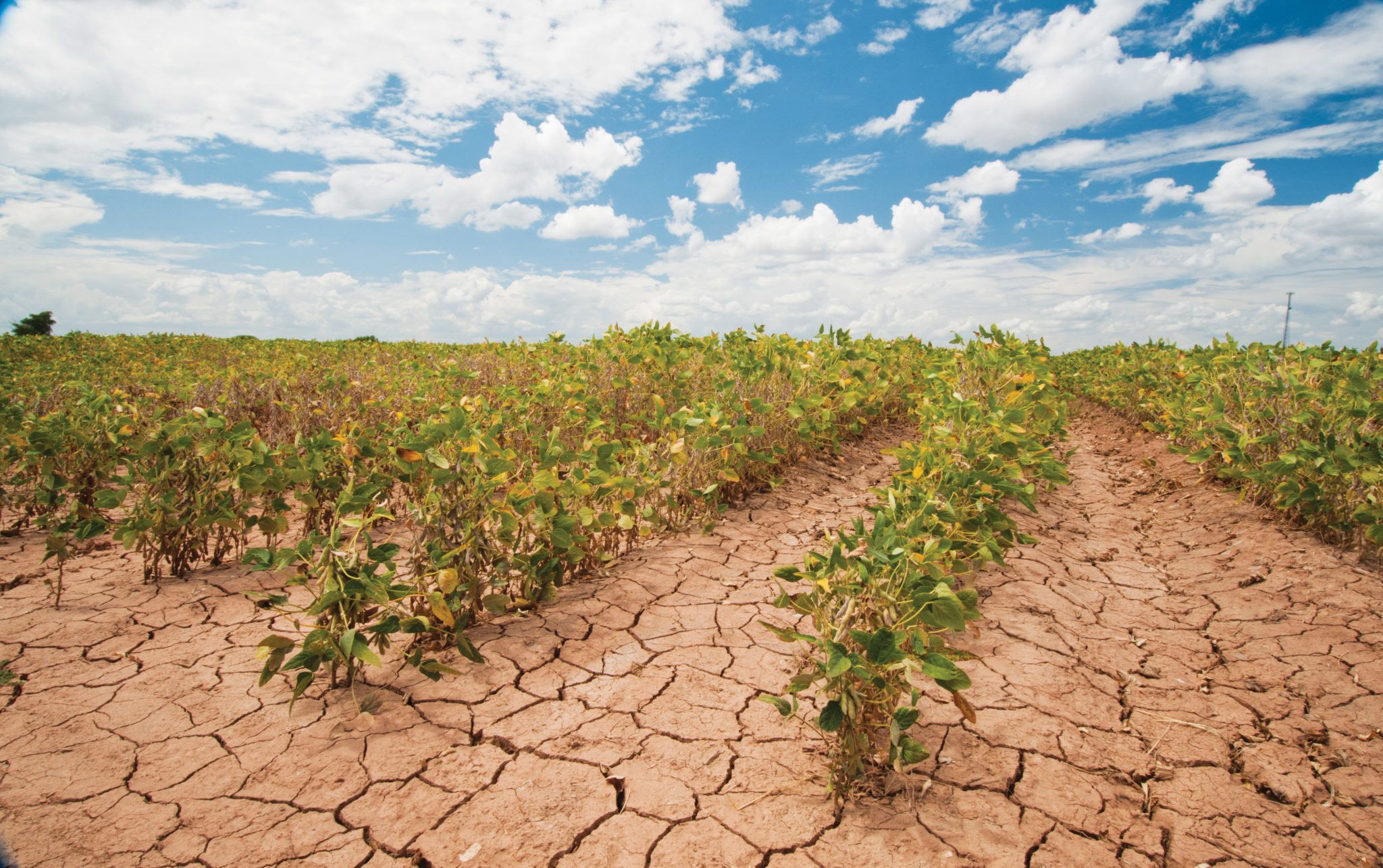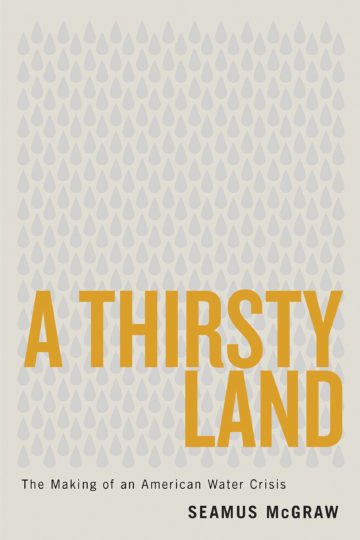
Troubled Waters: New Book Plunges into Texas’ Convoluted Water Law
Seamus McGraw's reporting tour de force goes beyond policy and history by trying to understand the perverse incentives that drive decision-making.
A version of this story ran in the April 2018 issue.
In 2009, the Williams family began an almost decade-long battle over whether the water beneath their land is theirs to do with as they please. Claytie and Jeff Williams, the father-son duo who led the fight, grow alfalfa, cotton, teff grass and other crops on more than 7,000 acres just west of Fort Stockton. The land is dry and would be unsuitable for farming if it weren’t for the 47,400-acre-feet of groundwater the Williamses have been permitted to pump annually by the Middle Pecos Groundwater Conservation District. The Williamses, who only use about 25,000-acre-feet annually, wanted to sell the excess to nearby towns such as Odessa and Midland that were struggling to support their growing populations.
But when the conservation district’s board members found out about the plan, they balked. The district argued that if farmers started exporting their water allotment outside the region, aquifer levels could drop precipitously and the area would suffer. The board members’ obligation was to the local interests first. Frustrated, Jeff Williams decided to take a stand. On the edge of the Chihuahuan Desert, he planted rice, a thirsty crop typically grown in river basins. If the district wasn’t going to let him sell his water, he was going to pump it out and use it on a water-intensive crop instead. It was “a little bit of a protest,” he said at the time, and a way of highlighting that the “system that they created that they think is so fantastic is already broken.”

By Seamus McGraw
University of Texas Press
285 pages; $27.95
Such is the convoluted and sometimes nonsensical nature of water law in Texas. In A Thirsty Land: The Making of an American Water Crisis, Seamus McGraw plunges deep into the world of water policy and asks fundamental questions about who has a right to the state’s water and for what purpose. What he finds is that the rules are complex, even absurd, and often create perverse incentives. Arbitrary political boundaries determine water use, even though aquifers stretch across county and district borders. The law views groundwater and surface water as separate, leaving little room to recognize their interconnected nature.
A Thirsty Land is a reporting tour de force and reminiscent of Cadillac Desert, the 1986 book by Marc Reisner that is required reading for anyone seeking to understand water policy in the West. McGraw’s work is similarly nuanced, thoroughly researched and beautifully written. He moves from hot and dry West Texas to the swampy and flood-prone Gulf Coast to the water-poor and rapidly warming Rio Grande Valley with ease, finding fascinating conflicts involving water and the people who want it.
At the same time, McGraw showcases a deep understanding of Texas law, history and culture. There’s a desire not just to explain where we stand now, but how we got here. McGraw draws on newspaper archives to trace the history of water law back to Spanish rule. One chapter on cloud seeding — a weather-modification technique that injects aerosols into clouds to try to create rain — demonstrates that the human instinct to engineer our way out of nature’s limitations is not new. McGraw tells of R.G. Dyrenforth, a celebrity who made his name by claiming that firing explosives into the sky would “call the clouds together” and make it rain. In 1910, another self-proclaimed rainmaker got in on the game. Cereal magnate C.W. Post spent the equivalent of $1.2 million detonating 14-pound bundles of dynamite in what he called “rain battles.” Unsurprisingly, neither Dyrenforth’s nor Post’s efforts worked.
A Thirsty Land goes beyond policy and history by trying to understand the human incentives that drive decision-making.
McGraw uses these stories to make a point about current cloud seeding efforts. With appropriate skepticism, he wonders whether cloud seeding can in fact be used to develop a reliable rain program that generates a significant amount of water. Also, if there is only so much freshwater on the planet, cloud seeding raises questions about whose water is being forced out of the clouds, he writes.
A Thirsty Land goes beyond policy and history by trying to understand the human incentives that drive decision-making. In McGraw’s telling, there are no villains, just ordinary folks competing for a scant and rapidly dwindling resource. In the fight between landowners in Northeast Texas and politicians in Dallas County over building the Marvin Nichols Reservoir on the Sulphur River, both sides, McGraw says, are motivated by their memories of the past. For the landowners, a dam would mean thousands of acres of their land will be drowned in order to hoard water for Dallas residents. For the Dallas politicians, the memory of coming close to rationing water in the 1950s during the worst drought on record in Texas underlies their push to secure new sources of water. “There is,” McGraw writes, “for those whose job it is to make sure that there will be enough water for the Metroplex down the road, always a sense of almost painful urgency. Talk to them long enough and you begin to hear between their words a kind of persistent, low-level humming anxiety.”
Ultimately, A Thirsty Land can be read as a damning indictment of the failure of the Texas Legislature.
McGraw also recognizes that fights over water are ultimately about power and prosperity, and people of color typically get the short end of the stick. In one chapter, McGraw compares Terlingua — a border town home to drifters, artists, hippies and a reliable water supply — to Las Pampas, a small colonia with no water infrastructure. He asks, “Why is it that two communities, separated by what in Texas is a comparatively short distance, located in the same arid region, facing the same harsh conditions, both above- and below ground, are facing such different fates?” The answer, he concludes, is that the residents of Las Pampas were fleeing war and poverty, spoke broken English and encountered unscrupulous developers and corrupt officials. McGraw also doesn’t fall into the trap of suggesting that a free and open market to trade water could solve Texas’ troubles. Instead, he points out that a water market may drive the price of water up, which would carry the risk of making water a luxury commodity.
If there is one criticism to be made of A Thirsty Land, it’s that while McGraw tells compelling stories about water fights across the state, they read like individual entries in an anthology, rather than chapters in a book. This is not for a lack of trying. McGraw attempts to remind readers about the similarities in the challenges faced by Texans in different parts of the state. Still, the through line isn’t clear, and the reader is asked to jump from one complex area of water law to the next with little connective tissue.
Ultimately, A Thirsty Land can be read as a damning indictment of the failure of the Texas Legislature. Though Texas is growing quickly and proving to be a bellwether state for the effects of climate change — from raging wildfires to devastating hurricanes — its politicians aren’t demonstrating the leadership it will take to steer the state through the next 100 years. Instead, the Legislature has handed over control to hundreds of mini-fiefdoms, allowing parochial interests to win out over the interests of the state and then letting the courts handle the conflicts that arise. That strategy, McGraw writes, “exacerbates local problems, institutionalizes conflicts between regions of the state — the dry west versus the water-logged east — and, most importantly, risks leaving the state woefully unprepared to face a prolonged water crisis that sooner or later is all but guaranteed.” A dark vision indeed.


